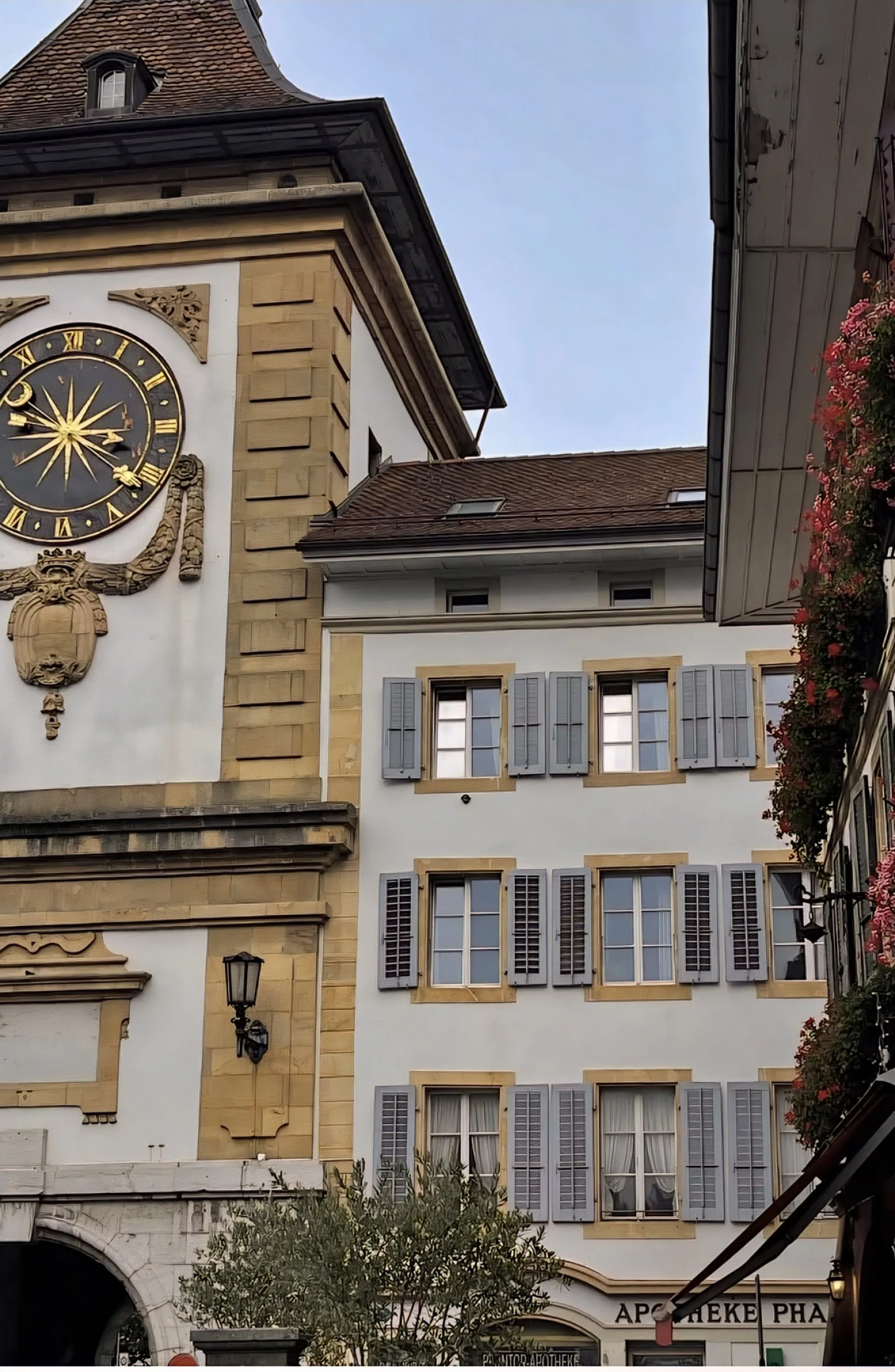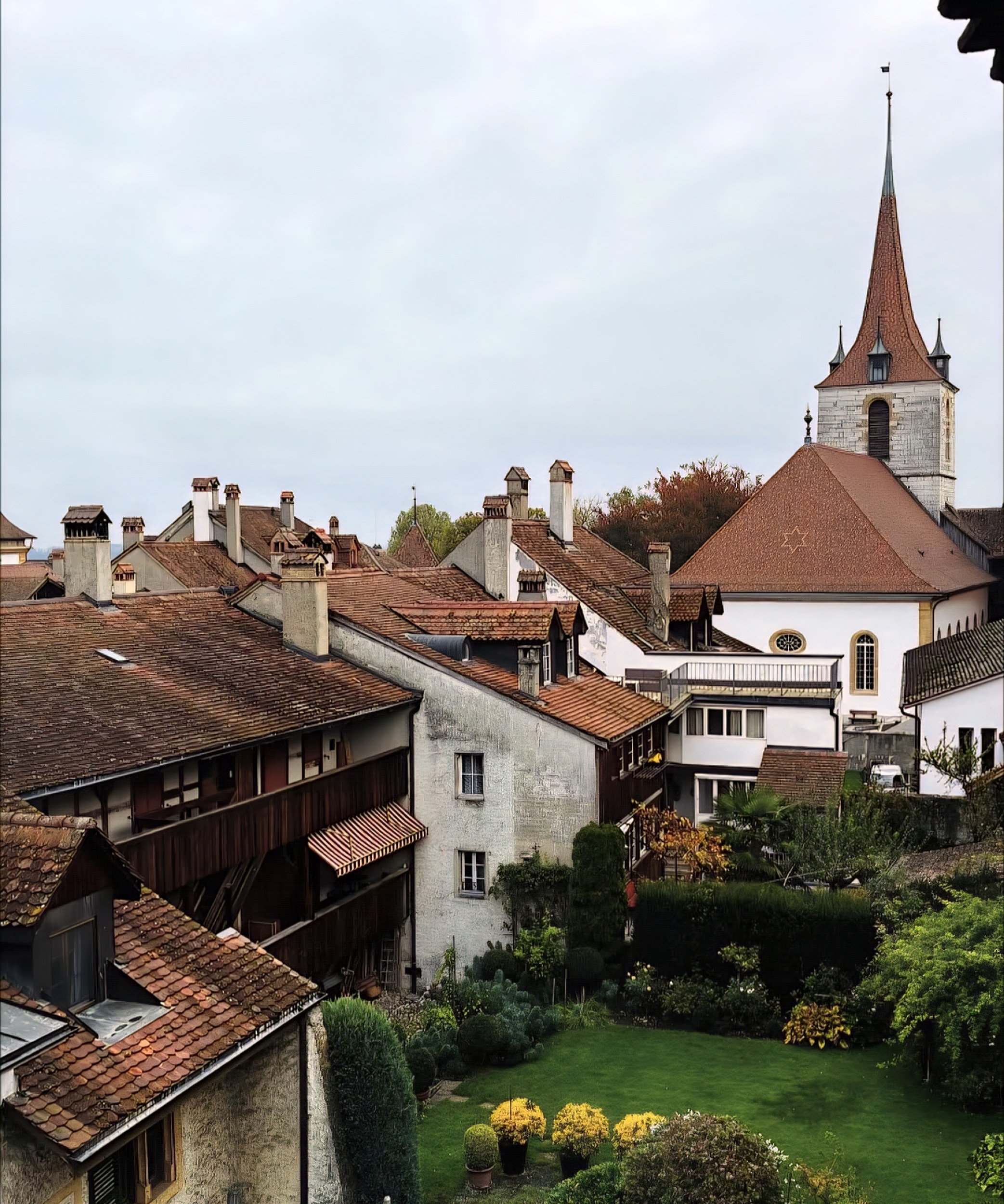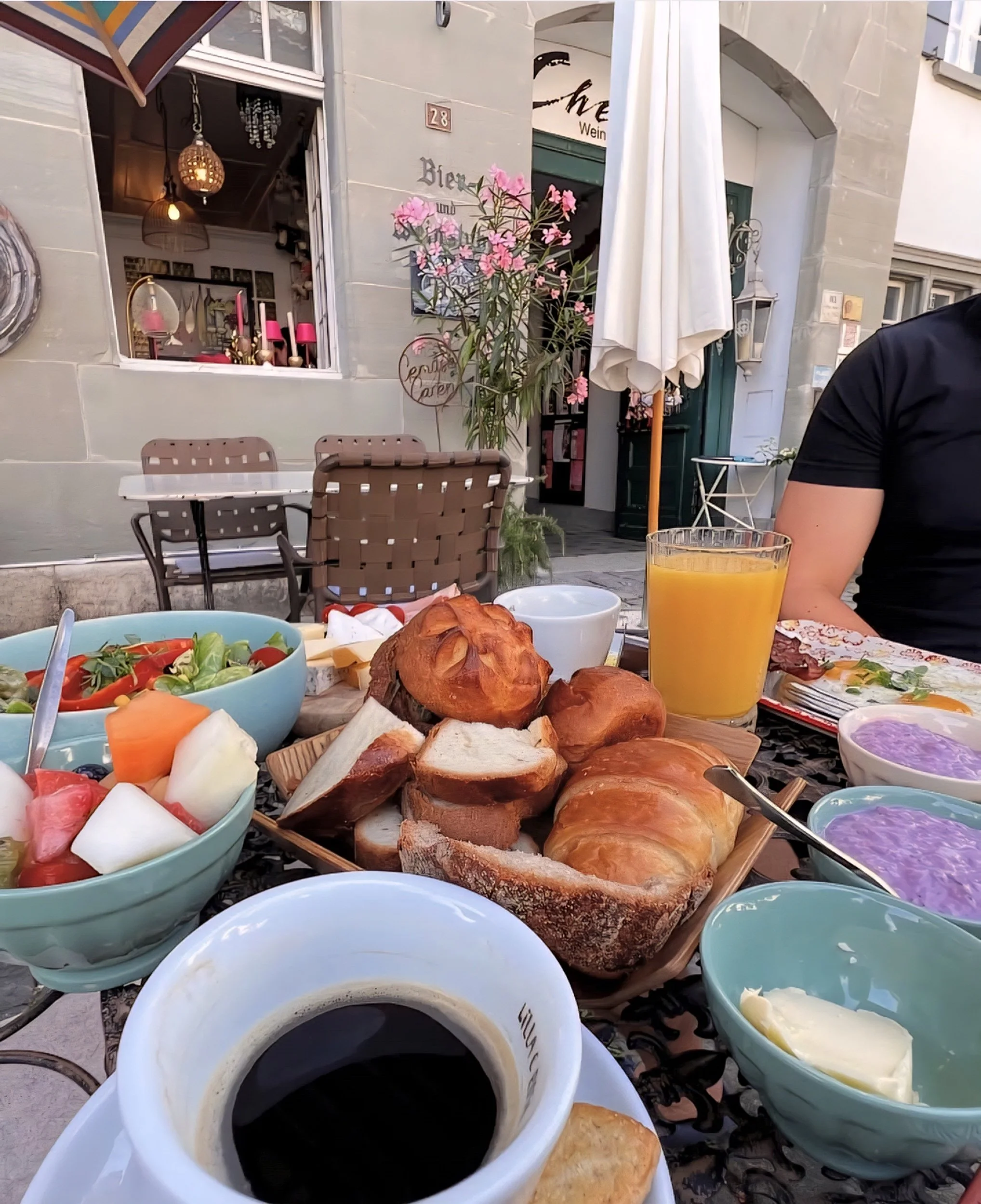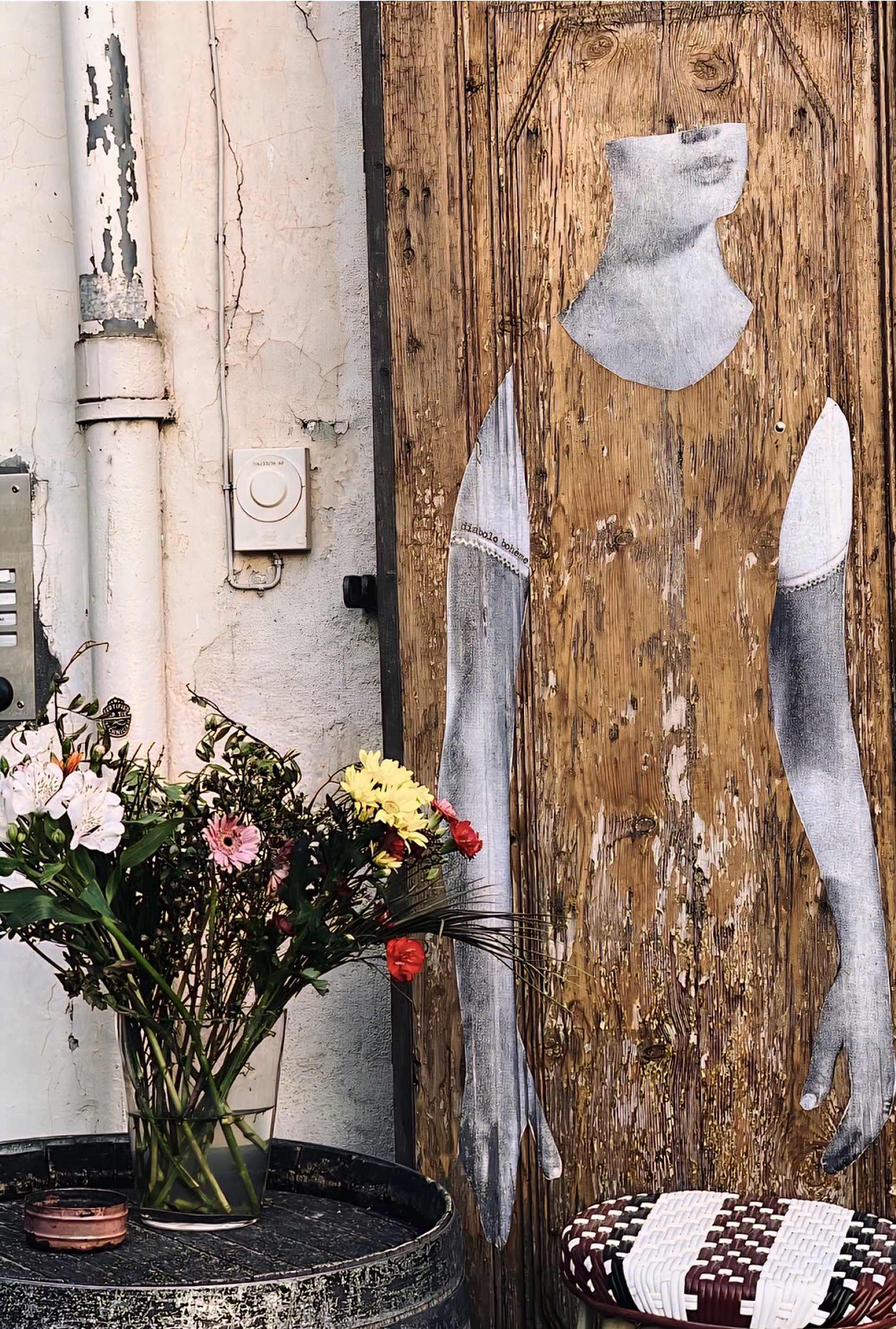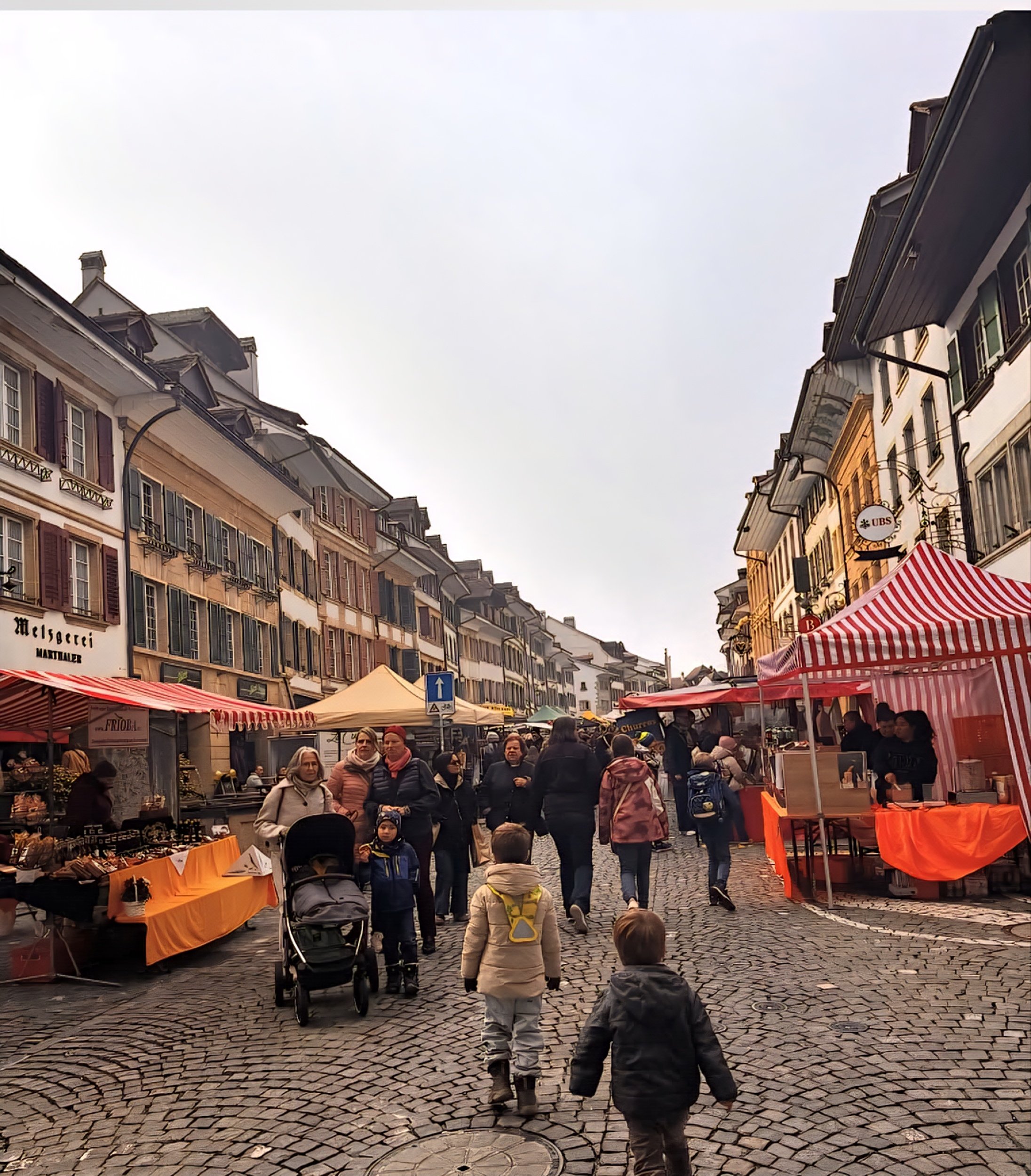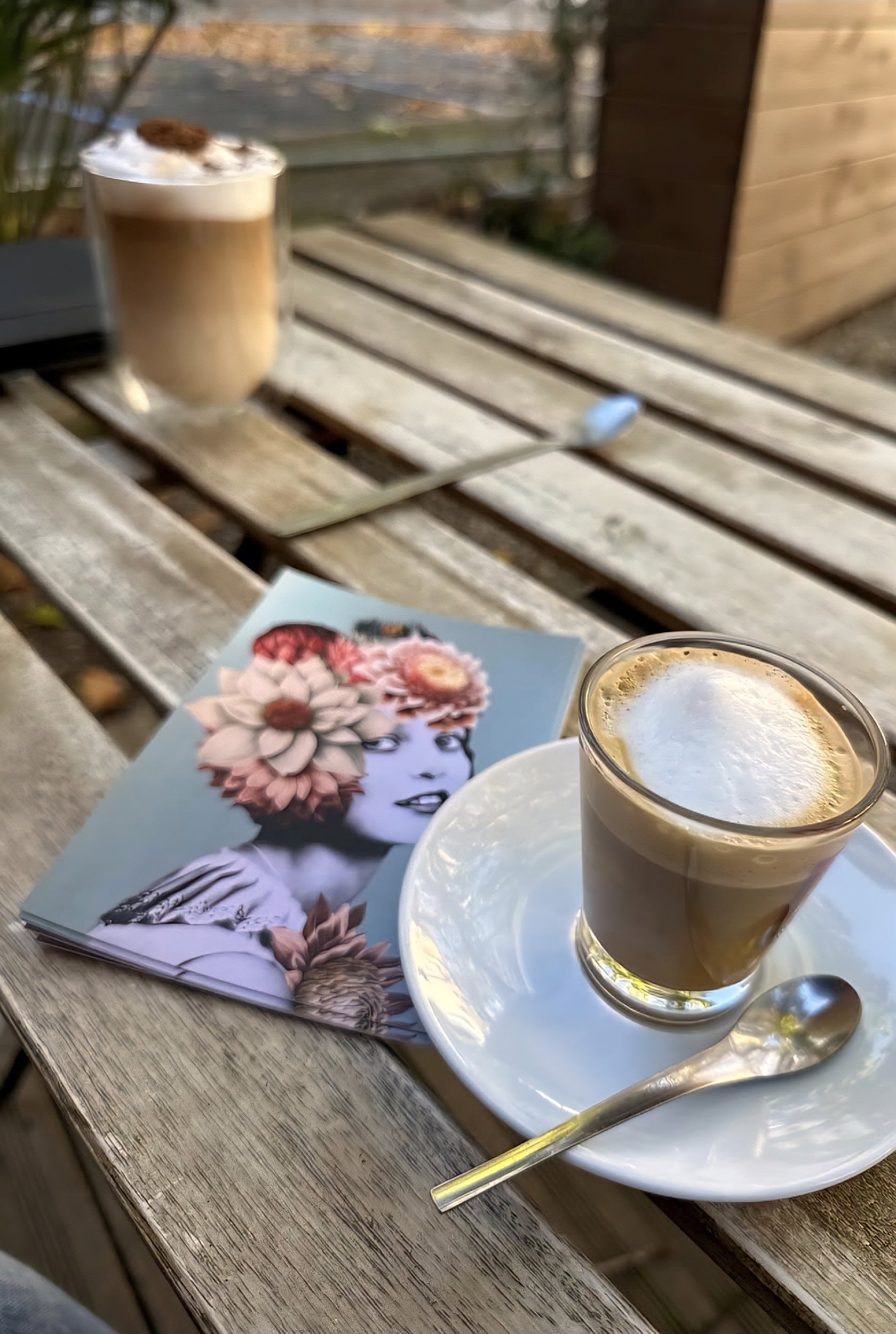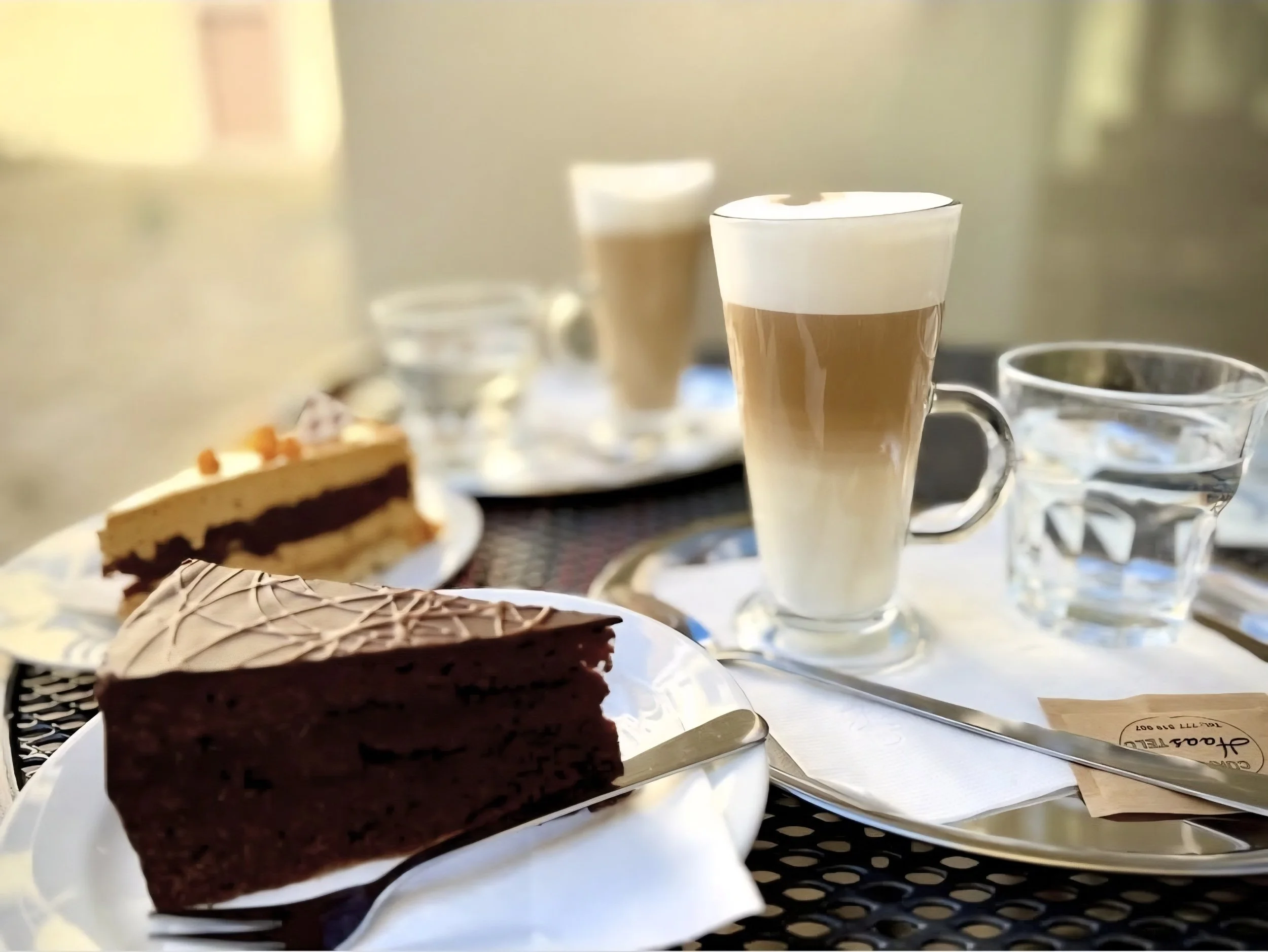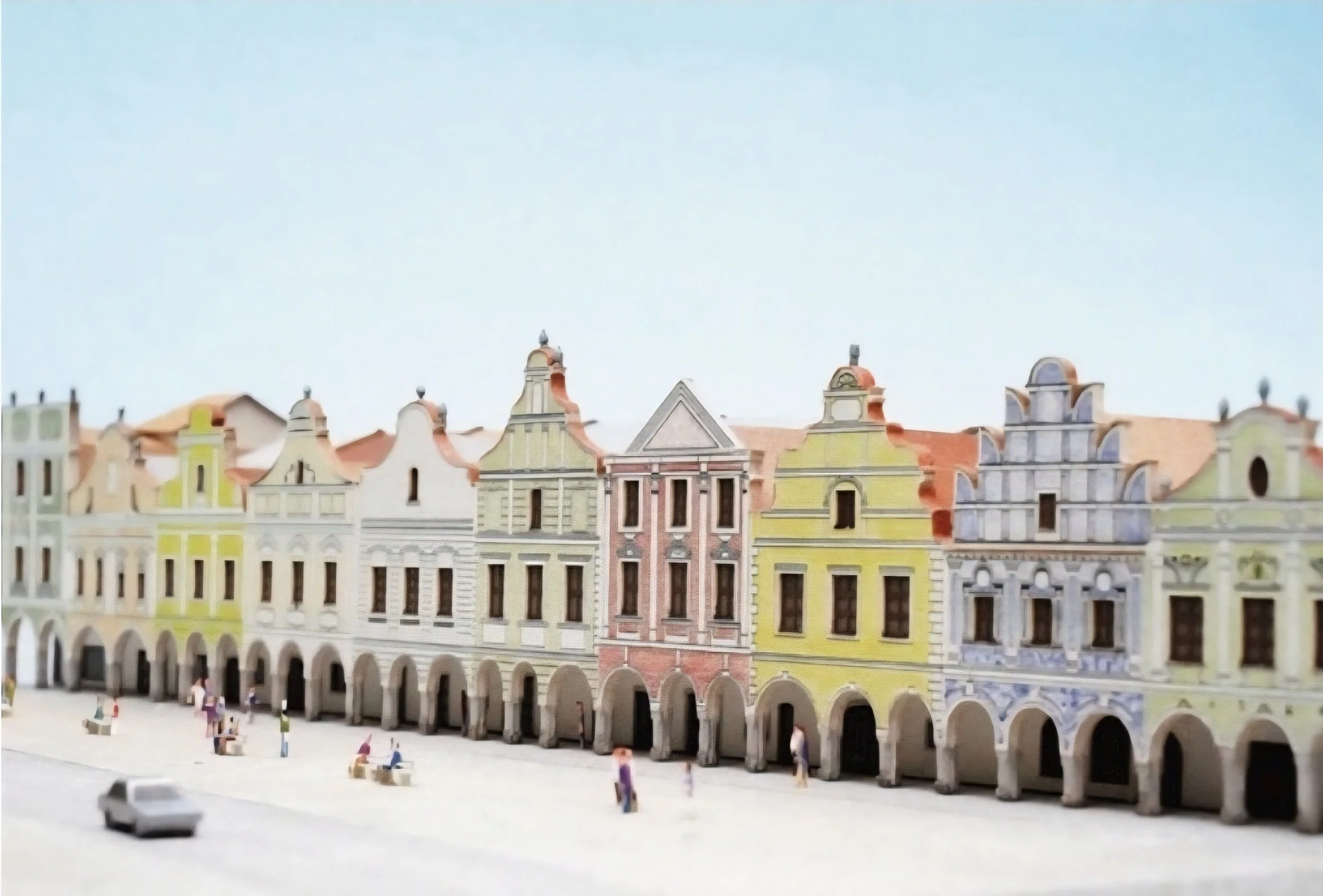Cozy Small European Villages to Visit in December
December in Europe is often portrayed one way: twinkling lights, massive Christmas markets, mulled wine, and packed plazas. Cities like Vienna, Prague, and Strasbourg take center stage in almost every guide… and while they do have their charm, they’re not for everyone! The crowds can be overwhelming. Prices spike. And after a while, the markets start to blur together. You know what I mean?
But not all winter travel needs to be about spectacle. There’s a quieter, more wholesome way to experience Europe in winter - especially if you’re someone who enjoys a slower pace, fewer people, and a bit of space to think. Small towns and lesser-known villages offer that. And Europe is full of them! They’re not closed for the season; they’re simply carrying on with local life. Bakeries are open and buses are running. People are out walking their dogs. The difference is, you’re not sharing it with hundreds of others.
What many travelers don’t realize is that winter is one of the best times to visit these places. You’ll often get lower accommodation prices, restaurants are less busy, and you can actually talk to locals without feeling like part of a “crowd”. The weather might be cold, sure… but it’s manageable, especially in Southern or Central Europe where winters tend to be milder than expected. And if you catch a light snowfall in one of these towns? It’s just a bonus.
This post is for travelers who want something different from their winter trip. Maybe you’re planning a solo escape before the holidays. Maybe you're taking a break with your partner and want a change of scenery. Or maybe you're just trying to unplug and reset before the new year. Whatever the reason, these towns offer that little bit of space you might be craving.
These are not Instagram-perfect destinations, but that’s a good thing. They're real places, not curated attractions. And in December, they show a side of Europe that’s hard to find during the busy summer or peak holiday weeks: calm, practical beauty. You won’t find long lists of must-sees here. You’ll find places where you can settle in, go for a walk, have a good meal, and not feel like you’re missing out on anything.
If that sounds like the kind of winter trip you need right now, read on.
Murten, Switzerland: Frosty walks by the lake and medieval calm
Murten (or Morat in French) is a compact lakeside town in western Switzerland, located about 30 minutes from Bern by train. While it’s well-known within Switzerland, it’s rarely on international winter itineraries! This makes it exactly the kind of place that stands out for slower, off-season travel.
Murten (Morat in French) is a small town that quietly holds onto its medieval heart while still functioning as a very real, lived-in place. Located in the canton of Fribourg, right on the language border between French- and German-speaking Switzerland, it's a fascinating spot culturally! Menus, signs, and conversations shift between both languages here. That bilingual identity adds a subtle richness to a visit here, especially if you’re curious about local life beyond tourist gloss.
In winter, Murten just feels easy. The lake’s still, the air’s cold, and the town moves at its usual pace. You might pop into the bakery, have a quick chat at the cheese counter, then head to a café.
A town made for walking - even in winter
Murten’s old town is compact and entirely walkable. Even in December, the paths are well-maintained, and the gentle slope down to the lake makes it easy to explore without a car. You can walk the medieval ramparts (yes, even in winter! They're open and free), take a slow loop around the old town, or follow the lakeside promenade for a peaceful hour-long stroll. Benches line the lake, and while it’s too cold to swim, it’s the perfect spot to stop with a thermos or just take in the stillness.
If you’re a photography fan, visit just after sunrise or around 4 p.m. when the light softens across the lake. The contrast of warm light on the stone facades and cool tones over the water is subtle but beautiful.
What to do in Murten in winter
Murten isn’t packed with attractions, but that’s part of what makes it work in winter. The cold slows things down a bit, but everything still runs: cafés stay open, the market sets up as usual, and locals go about their routines. You can step into that vibe without needing a full plan.
Start with a stop at Kaffeemühle, a small café just off the main street. Locals come here for strong coffee, quiet corners, and cake! Always cake. The upstairs seating feels like a reading room, and if you’re lucky, the seasonal plum cake or nut tart will be on offer. You can bring a book or just sit and warm up. It’s such a relaxing feeling here.
The Museum Murten (Musée de Morat) is a good way to get a sense of the town’s background, especially on colder days. It’s housed in a former mill and doesn’t take long to walk through, but it covers a lot: Roman artifacts, medieval architecture, and the Battle of Murten in 1476 - a moment that still holds weight in Swiss history. Exhibits are well put together and multilingual, and the whole place has a kind of local pride that’s nice to see.
Back outside, take some time to walk the main street arcades. These covered walkways are one of Murten’s most distinctive features. They’re rare in Switzerland, and very useful when it’s snowing or raining. They’re lined with independent shops: secondhand bookshops, wine sellers, small design stores. Nothing fancy, just well-kept and clearly used by people who live here. Go stroll!
If you’re in town on a Thursday, the weekly market is worth checking out. It’s not huge, but got loads of local cheese, fresh bread, dried apple slices, homemade jam, and whatever’s in season from the surrounding farms. Even in winter, there’s a good mix of regulars picking up groceries and a few vendors happy to chat if it’s not too cold.
Eating and drinking in Murten
This part of Switzerland is known for its wine, and even in winter, it’s worth exploring. Just across the lake from Murten is the Vully wine region, one of the smallest in the country, but also one of the most characterful. Most of the vineyards here are family-run, and while it’s more common to visit in autumn, you’ll still find Vully wines on menus and in local shops throughout the colder months.
If you’re ordering by the glass, keep an eye out for Chasselas, a crisp, lightly mineral white that pairs well with the kind of food you’ll find everywhere in Murten this time of year. Raclette, fondue, rösti, and other warming, cheese-based dishes that everyone love. These aren’t tourist gimmicks - this is just what people eat when it’s cold! You’ll often see filets de perche too, a delicate lake fish served with lemon butter or herbs, usually alongside simple winter sides like potatoes, roasted root vegetables, or a salad if you’re lucky.
For a casual lunch or light dinner, Bistrottino, just off the main square, is a good call. It’s the kind of place you might walk past without noticing - just a few small tables, a handwritten chalkboard menu, and food that’s made with care. You’ll find homemade soups, tartines with local cheese or cured meat, and daily specials that follow the season. It’s quiet, affordable, and refreshingly normal - not staged for visitors, just a place locals actually eat. And sometimes that’s exactly what you want after a cold day out walking.
Where to stay in Murten
There are a few good places to stay in and around Murten, depending on the kind of trip you’re after. If you want to be close to everything but still have some peace and quiet, Hotel Murtenhof & Krone is a solid choice. It’s a family-run spot just outside the old town walls, so you’re only a couple minutes from the main street, but you also get views over the lake and rooftops. Some rooms have balconies, others have timber beams or deep soaking tubs. It’s a mix of old and updated, and so charming. Breakfast is included, and their restaurant is one of the better places in town for traditional Swiss food that doesn’t feel heavy or overdone.
If you’d rather stay right in the center of things, Hotel Adler is a reliable mid-range option. The rooms are warm and well-insulated, the staff are laid-back, and there’s an in-house pizzeria that’s open late by Murten standards. It’s not fancy, but it’s clean, comfortable, and especially convenient if you’re arriving by train or just want everything within walking distance.
For something quieter and more rural, Auberge de la Croix Blanche is about a 10-minute taxi ride away, in the nearby village of Villarepos. It’s a classic countryside inn with a quiet setting, local wines, good regional food, and a more low-key pace. It’s a great option if you want to spend your days exploring Murten but sleep somewhere that feels completely out of the way.
Lodève in Winter: Art, cafés, and calm days in the south of France
Lodève doesn’t try to impress you. It’s not one of those towns with a curated old quarter or a long list of things to do. But if you’re the kind of traveler who notices what’s on the chalkboard menu, or who prefers a real working town over a “postcard” version of France, it starts to make sense pretty quickly.
Set in the hills of the Hérault, about an hour inland from Montpellier, Lodève sits just far enough off the main routes that it’s often overlooked - especially in winter. But that’s also what makes it work. You can show up in winter and still find cafés open, the weekly market going, and people out walking their dogs or picking up a baguette before lunch.
It’s a small town, but not sleepy! You’ll find a contemporary art museum, a few streets of small independent shops, and a handful of cafés and wine bars that feel genuinely local. Some people come to Lodève for the hiking trails in the surrounding hills, or as a base to explore the wider Haut-Languedoc area. Others come for the quiet… to write, to think, to have a few days offline. I know I would (!)
If you’re looking for a quieter December destination in the south of France (somewhere you don’t have to compete with crowds, or spend a fortune to feel comfortable) Lodève might be exactly what you need.
What winter in Lodève actually looks like
Unlike villages that shut down in the off-season, Lodève still functions in December. The shops stay open, and there’s a weekly market. People are out with their baskets or lingering at cafés. The town has a population of around 7,000, which means there’s enough going on to feel alive, but not busy. Winter skies tend to be clear and blue, with occasional misty mornings. Snow is rare but possible in January. Most days are cold but not freezing (think 5–10°C) perfect walking weather.
The streets are narrow and stone-paved, built on a slope with the Lergue River running below. You can cover the whole town on foot, and it’s a genuinely pleasant place to wander. Super cozy.
What to do in Lodève in winter
Start with the Musée de Lodève. It’s right in the town center and absolutely worth a visit - not one of those outdated local museums filled with dust and confusion. The space is modern, well-designed, and the kind of place where you can spend an hour or two without feeling overwhelmed. The permanent collection moves from prehistoric fossils to local geology to 19th-century tapestries and painting, and the temporary exhibitions often focus on artists from the region. Entry’s affordable, and even on weekends it never gets busy.
If you’re curious about local crafts, spend a bit of time walking Rue Neuve and Rue de la République, where you’ll find a handful of working studios, potters, small galleries, and artist-run shops. It’s not a big scene, but it’s active, and many places stay open year-round. However some may close between Christmas and New Year’s, so it’s best to check posted hours or just ask around.
If the weather’s decent, take the short walk up to Chapelle Saint-Michel. It’s not a hike (more of an uphill stroll) but wear proper shoes if the ground’s wet. From the top, you get a wide view over the valley and rooftops, and it’s usually empty except for the odd local out for a walk.
On Saturdays, head to the market at Place de la République! Even in winter, it’s very much alive and full of the essentials. You’ll find Larzac cheeses, winter greens, natural wine from nearby co-ops, and the usual market vibe. If you get there early, pick up a roast chicken and some bread, and you’ve got lunch sorted.
And when you need a warm break, Café Le Minuscule lives up to its name. It’s a tiny spot with just a few mismatched chairs and a quiet, unbothered vibe. Locals stop in for tartines, coffee, or herbal tea. No one’s rushing you out, and it’s the kind of place where it feels completely normal to just sit for a while and not do much. Bring a book or a notebook, and stay as long as you like.
Where (and what) to eat in Lodève
This is the kind of town where what’s on the plate depends on the weather, the season, and what’s available at the market. You won’t find anything trendy or overly designed, but if you like food that’s regional, warming, and made without fuss, you’ll eat well here.
One of the dishes you’ll see if you’re here in winter is aligot: creamy mashed potatoes mixed with local cheese and garlic, usually served with sausage or roast meat. There’s also lamb stew, hearty lentils with sausage, and thick vegetable soups that come with slices of rustic bread on the side. The nearby wine regions of Saint-Saturnin and Montpeyroux produce excellent reds and lighter whites - nothing fancy, just the kind of wine people here actually drink. You’ll spot them on most restaurant menus or sold by the bottle at the Saturday market.
If you’re after a proper sit-down lunch, Le Soleil Bleu is a good place to start. It’s unpretentious, run by locals, and the kind of place where the menu fits on one chalkboard. Yay! Portions are generous, the wine’s poured without ceremony, and the bill usually comes in under €20 (which feels rare these days).
For something a bit more casual, Le Grand Café just off the main square is open throughout the week and has a heated terrace if the sun’s out. It’s a good spot for coffee and a light lunch, or just to sit for a while when everything else is closed for the afternoon.
Where to stay in Lodève
Lodève isn’t packed with places to stay, but that’s part of why it works so well. You’re not choosing between dozens of hotels - just a few small guesthouses, B&Bs, and rentals with a personal touch.
La Roseraie is a solid option if you want to stay close to the town center without giving up a bit of quiet. It’s in a residential area but still walkable to the cafés and shops. The rooms are simple and warm, and in winter, you might find a fire going in the common area or a breakfast table set near the window. It feels more like staying in someone’s home than a hotel - in a good way.
Another place worth looking at is L’Atelier du Soleil, a B&B set in an old stone house that also happens to have an artist’s studio attached. The rooms have their quirks (creaky floors, mismatched furniture), but they’re clean and calm, and the hosts are friendly without being overbearing. It's the kind of place where no one’s rushing you out the door in the morning.
There’s no spas or chains or places to stay at, but if you’re coming to Lodève for a few slow days, these spots are exactly what you need: quiet, local, and easy to settle into.
How to get to Lodève without a car
You can’t get here by train, but it’s still reachable by public transport. From Montpellier, take bus line 301 (operated by liO Hérault Transport). It runs multiple times daily, including Saturdays, and costs about €2. The ride takes roughly 1 hour 15 minutes and drops you off near the town center.
Once you’re in Lodève, you won’t need a car. Everything is walkable! Museum, shops, cafés, and walking trails are all within 15 minutes on foot.
Vipiteno, Italy: Alpine stillness in South Tyrol
Vipiteno, or Sterzing, depending on which language you catch first - is the kind of place you might not plan for, but end up remembering. It’s tucked into a narrow Alpine valley just south of the Austrian border, in northern Italy’s South Tyrol region. If you’re taking the train north from Bolzano and glance out the window at just the right moment, you’ll probably wonder what this little town is… pastel buildings, mountain views, a bell tower rising over the rooftops. It’s small, but not sleepy. Scenic, but not overdone. You’ll love it here.
This part of Italy doesn’t feel much like the Italy most people picture. South Tyrol has its own vibe - German is more common than Italian, the food leans hearty, and the winters feel more Alpine than Mediterranean. While a lot of the region is geared toward ski resorts and high-end chalets, Vipiteno is different. It has snow, sure. But there’s less crowds. No one trying to sell you a ski pass or book you into an overpriced spa. It’s just a working mountain town that also happens to be beautiful in a low-key way…
In December, it slows down even more. The arcaded main street (only about a 10-minute walk, end to end) is lit with simple lights. Shops stay open, but they’re the kind locals actually use: bakeries, butchers, bookstores. You’ll see people out running errands, maybe stopping for a mulled wine or a slice of strudel, but there’s no rush. That’s the part that sticks: it’s calm without being empty.
If you’re looking for a quiet winter base in northern Italy (somewhere you can walk, eat well, take a few snowy day trips) Vipiteno is easy to settle into.
If you're looking for a quiet winter town in northern Italy that feels cozy, calm, and lived-in, Vipiteno is worth adding to your list.
What it feels like here in winter
Vipiteno does have a small Christmas market - just one main street, a few craft stalls, and some mulled wine vendors. It runs from late November to early January and feels more like a community gathering than a tourist magnet. Outside of those few blocks, the town is quiet.
Snow is likely in December, but it’s not guaranteed. Some years it comes early; other years it just dusts the rooftops and disappears by lunch. Either way, the alpine setting is dramatic! The town sits at nearly 950 meters above sea level and is surrounded by steep peaks on all sides. The sun dips early behind the mountains in winter, casting a blue-grey light over the valley by late afternoon.
Shops close for lunch. Families go out walking. It’s peaceful in a way that feels structured and rooted in routine.
What to do in Vipiteno in winter
Vipiteno isn’t big (you can walk from one end of the old town to the other in about ten minutes) but there’s plenty to notice along the way. The main pedestrian street runs between two medieval gates, lined with pastel buildings, covered arcades, and small shops that are more practical than curated. You’ll pass bakeries that smell like butter and spice, a couple of local bookstores, and outfitters selling proper mountain gear (the kind people here actually use). It’s tidy and relaxed, with just enough going on to keep you interested, but never too much.
If you’re up for something indoors, the Multscher Museum is tucked inside the church complex on the square. It’s small and focused - mostly late Gothic sculptures and altarpieces carved by Hans Multscher in the 15th century. Even if religious art isn’t your thing, the level of detail is impressive and it’s quiet enough to take your time. It’s warm, well-kept, and doesn’t require more than 45 minutes.
One of the best things to do (especially if there’s snow on the ground) is to take the Monte Cavallo cable car. It leaves from just outside the town and gets you to the top in under ten minutes. From there, you’ve got access to walking trails, panoramic views over the valley, and plenty of space to just take in the landscape without getting caught in the usual ski resort chaos. There’s also a long toboggan run and a few mountain huts where you can stop for something hot: goulash, dumplings, maybe apple strudel if it hasn’t sold out yet. It’s not remote or wild, but it’s a very peaceful way to spend a half-day.
And if it’s cold and you don’t feel like doing much at all, several local hotels offer access to their wellness areas, even if you’re not staying there. Hotel Lamm has a small sauna and quiet relaxation room that you can book for a few hours. It’s not a fancy spa setup (no ambient music or robes with logos) just a warm, clean space to decompress for a bit.
Vipiteno is the kind of town where you can keep things simple. Walk, eat, read, sit somewhere warm. That vibe.
Food and drink in Vipiteno
Food in this part of northern Italy leans hearty - in the best way. You get the comfort of Italian cooking, but with alpine depth: smoked speck, barley soup, dumplings, and thick slices of cake that come with a proper dollop of cream. One dish you’ll see everywhere is Schlutzkrapfen, a kind of Tyrolean ravioli usually filled with spinach and soft cheese. Another is Knödel, those dense, satisfying bread dumplings that somehow always hit the spot after a cold day outside. Local reds, especially Lagrein, go well with everything, and you’ll find a lot of strong mountain cheese on menus too - whether melted into something or served with bread and butter on the side.
For a slower evening, Vinzenz Zum Feinen Wein is a nice spot: casual, candle-lit, with regional wines and small plates if you don’t want a full meal. If you’re after something more traditional, Restaurant Pizzeria Lamm does reliable South Tyrolean food in a warm, wood-paneled setting. It’s part of the hotel but not overly “polished”, and it gets a mix of travelers and locals, which is usually a good sign.
Where to stay in Vipiteno
If you want to stay right in the old town, Hotel Lamm is an easy, low-stress choice. The rooms are warm and quiet, with that classic alpine feel: wood paneling, thick duvets, and actual insulation that keeps out the cold. There’s a small sauna downstairs you can book for a couple of hours, and the breakfast is better than most: local cheese, strong coffee, proper bread. Staff are relaxed but helpful, and if you ask, they’ll usually point you toward a good walk or recommend a hut that’s open. If it’s available, try to get a room on the top floor! The mountain views are worth it.
For something more modern, Steindl’s Boutique Hotel is just outside the center, just less than 10 minutes on foot. It’s a newer build, designed with clean lines and big windows, but still feels rooted in the area. The rooms are simple but well thought out, and the whole place leans into sustainability without making a big deal about it. Breakfast is served in a glassed-in room facing the mountains, and they do proper coffee - no pods, no fuss. A good fit if you prefer something with a bit more space and less old-school alpine styling.
Getting to Vipiteno by train
Vipiteno is easy to reach by public transport. From Bolzano, it’s a direct train north on the regional line (around 1 hour and 15 minutes). The station is small and only a 10-minute walk from the town center. Trains also run from Brennero/Brenner and Innsbruck, making it a great stopover between Austria and Italy if you're doing a longer trip.
Telč in winter: A still, cozy town in the Czech countryside
This small town in the Vysočina region, about halfway between Brno and Jihlava, is known for its UNESCO-listed main square, where arcaded townhouses with Renaissance and Baroque facades form a long, colorful row. In summer, it’s a regular stop for photographers and day-trippers. But in winter, it feels like an entirely different place.
By December, the pace of the town slows right down. The trees are bare, the ponds around the town start to freeze, and most of the visitors are gone. Locals carry shopping bags across the square, wave to someone in the post office, stop for coffee.
The square itself (Náměstí Zachariáše z Hradce) is one of the most beautiful in the country, not just because of how it looks but because of how intact it feels. Many of the houses still have original details from the 16th and 17th centuries: sgraffito decorations, old family crests, carved gables. In winter, with frost along the ledges and snow occasionally settling along the rooflines, it feels quiet but never abandoned.
Telč is a small town (about 6,000 people live here) and the centre isn’t just for tourists. Most of the buildings around the main square are still homes. You’ll see people going about their day, someone taking out the bins, or a bike parked outside a window. It just is how it is - and that’s what makes it nice.
If you’re looking for a quiet, walkable place to visit in the Czech Republic in winter, Telč is a good one to keep in mind. It’s calm, has some interesting architecture, and gives you a break from bigger cities without needing much planning.
Things to do in Telč
Telč isn’t a town that needs a long checklist. You don’t come here for a packed itinerary - you probably come because you want to be somewhere still. That said, there are a few simple things to do that make the most of being here in winter, when everything is quieter and the pace is slower.
Start with the square: Náměstí Zachariáše z Hradce. The heart of the town and one of the main reasons people come here, but it doesn’t feel like a tourist spot in December. The buildings are all slightly different in style and color, with arcades running beneath them and a few small shops or bakeries tucked inside. You don’t need a guidebook. Just walk slowly, look up at the gables and old facades, and let your curiosity do the rest. If you like photography, this is a great place to wander: the square holds its shape in grey winter light just as well as in the sun.
The castle is easy to visit and worth your time, especially in the colder months. It’s open on weekends and during the holidays, though it’s always smart to check ahead because hours can change in low season. The visit itself isn’t long (maybe 30 to 40 minutes) and includes a short guided walk through grand rooms with painted ceilings, stone floors, and a few leftover signs of 16th-century life. It’s a nice way to learn a bit about the town’s past without feeling like you're stuck on a tour.
Telč is also surrounded by water, which most people don’t realise until they get there. The old town sits between two large ponds (Štěpnický and Ulický) which were originally part of its fortifications. There’s a flat path that loops around both, easy to walk even in cold weather. It’s quiet in winter, and chances are you’ll pass more dogs than people. Love that! The view looking back toward the town from across the water is probably one of the best in the area, especially in the late afternoon when the rooftops catch the light.
And when you're ready to warm up, the cafés here are exactly what you want: unfussy, calm, and usually half-empty in winter. Café Telč is one of the more well-known ones, with simple coffee, strong hot chocolate, homemade cakes if you’re lucky. Café Hrádek, just around the corner, has a few extra seats and a view of the square. Neither place is trying to be cool. They’re just good spots to sit for a while to write, read, or just zone out with a drink and a window seat.
Food and drink in Telč
Czech food was made for cold weather! Most places in Telč serve the kind of meals that keep you full for hours: stews, dumplings, soups, and plenty of baked desserts. What’s refreshing is that the food here isn’t “dressed up” for tourists. It’s just what locals eat, and the prices feel honest. You’re not paying a premium for sitting in the town square.
One of the most reliable spots is Restaurace U Marušky - a no-frills, traditional place with all the classics: svíčková (slow-cooked beef in a creamy sauce with dumplings), česnečka (garlic soup that’ll warm you up fast), and whatever roast is on for the day, usually with cabbage and a side of something buttery. The portions are big, the service is direct, and it’s exactly what you want when it’s below freezing outside.
For something a little more relaxed, Amigo Telč does a mix of local dishes and Italian-inspired plates. The pasta’s handmade, the wine’s Czech, and there are a few vegetarian options too. It’s simple but good - the kind of place locals go for an easy dinner during the week.
Just a heads-up: restaurant hours in Telč still follow the traditional pace. Most places open for lunch around 11:30 and close again by 2. Dinner usually starts around 5 or 6 and wraps up by 9. Late-night service doesn’t really exist, so if there’s somewhere you want to try, it’s worth checking opening hours in advance - especially if you’re visiting close to Christmas.
Where to stay in Telč in winter
There are a handful of small hotels and guesthouses in Telč, and most stay open year-round - especially the ones right on or near the main square. You won’t find luxury, but you will find quiet rooms, warm blankets, and a good night’s sleep.
Hotel Celerin is a solid choice if you want to stay right in the center. The rooms are simple but spacious, the heating actually works (which isn’t always a given), and the windows look out over the rooftops. It’s quiet at night, even though you’re staying in the heart of town, and the staff are helpful without being overly formal.
If you want something with a bit more character, Penzion Telč No. 20 is a nice upgrade. It’s a smaller place, with thoughtful design, comfortable beds, and those extra little touches that make it feel more personal: good coffee, soft lighting, helpful owners who can suggest places to eat or help you sort out transport. It’s a great fit if you’re visiting as a couple or just want a space that feels a bit more like home than a hotel.
How to get to Telč without a car
You can reach Telč by a combination of train and bus - and while it’s not direct, it’s manageable. The easiest approach is:
From Brno: Train to Dačice or Třešť, then a short bus ride (30–40 minutes). Total journey time is around 2.5–3 hours.
From Jihlava: Direct regional bus takes about 45 minutes.
From Prague: Expect about 3.5 hours with a transfer, usually in Jihlava or Třebíč.
In winter, buses may run less frequently on weekends or holidays, so check current schedules on IDOS.cz (available in English). Once you arrive, everything in town is within easy walking distance.
When all you really want is a quiet place to land
Sometimes you’re just tired (from work, from the noise, from the year in general) and you want to go somewhere to breathe. Somewhere you don’t have to do anything impressive, or social, or even all that productive.
These kinds of towns are good for that. They’re small, but they function. Things are open. You can get coffee, buy bread, sit somewhere warm, and look out the window.
I think winter is one of the best times to travel like this - when the pressure’s off. No high season pricing, no crowds, no long lines. Just small, steady places where you can slow down without feeling isolated. You might not meet other travelers. You probably won’t post a lot. But you’ll eat well, sleep deeply, and maybe feel a little more like yourself again.
That’s what I’ve come to appreciate about this kind of travel. You don’t need a long list of things to see. You just need a place that lets you take a breath - ideally one with good soup, decent coffee, and streets you can walk without thinking too hard.
So if you’re sitting at home, looking for somewhere to go in December that won’t overwhelm you, maybe start with one of these towns. It doesn’t have to be a whole thing. Just book a few days. Bring a coat, bring a book, and give yourself a bit of quiet before the new year starts.
That’s it.
If this kind of winter travel speaks to you, here are a few more guides you might want to read next:
Solo weekend train trips in Italy : easy routes, small towns, and the kind of weekends that leave space to think.
Northern Spain in autumn : quiet villages, long lunches, and the kind of weather that makes you slow down.
Bookshop and breakfast towns in Europe : for when you want a quiet morning and nowhere to be.
Quiet Greek islands : yes, even in summer, you can still find peace by the sea.
Solo travel in southern France : small & cozy places, and time to explore by yourself.
FAQ: Cozy Winter Travel in Europe
Is Europe worth visiting in December if you don’t like crowds?
Yes, as long as you pick the right places. While the big cities and famous Christmas markets can get packed, smaller towns often stay quiet and very livable through the winter. You still get the seasonal charm (lights, cafés, snow if you’re lucky), but without the stress, inflated prices, or tour group chaos.
What are the best small towns in Europe to visit in winter?
Some of the best towns for quiet winter travel are places like Murten in Switzerland, Telč in the Czech Republic, Vipiteno in northern Italy, and Lodève in southern France. They’re not overrun by tourism, even in December, and they’re small enough that you can slow down without feeling like you're missing out.
Is anything open in small European towns in December?
In most of the towns we feature here - yes. These aren’t ski resorts or seasonal holiday villages. They’re lived-in towns where people go about their normal routines year-round. You’ll still find open cafés, restaurants, bakeries, shops, and local markets, though hours may be shorter around the holidays.
Can you travel Europe by train in the winter?
Definitely. Train travel in Europe is reliable year-round, even in winter. All of the towns mentioned in this post (Murten, Telč, Vipiteno, and Lodèv) can be reached by public transport. It might take a bit of planning and a few transfers, but the journeys are scenic, and you avoid the stress of winter driving.
Is December a good time to visit Europe solo?
Yes, especially if you prefer quieter places and don’t want to feel rushed. Smaller towns tend to feel safer, slower, and easier to navigate on your own. There’s less pressure to “see everything,” and more space to do things at your own pace. Bring a good book, dress warmly, and lean into the quiet.
Do I need to book hotels in advance for December trips?
In these types of towns, you can often find accommodation last-minute - especially after mid-December, when fewer people are traveling outside major holiday spots. That said, if you’re visiting close to Christmas or New Year’s, it’s smart to check availability early, since some small hotels close for a few days or fill up with locals visiting family.
What should I pack for a winter trip to small towns in Europe?
Layers are key… a warm coat, good walking shoes (waterproof if possible), gloves, and something to wear indoors that isn’t just thermal gear. Many cafés and guesthouses are cozy but not overheated. And don’t forget a book or journal — these towns are made for slow mornings and long afternoons.

